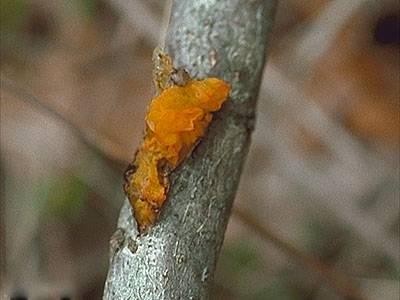Key points
- Various fungi such as Phellinus spp., Trametes, Perenniporia, Stereum, Oxyporus, Climacodon, Hericium, and Polyporus may cause stem, trunk, and branch rots.
- These fungi cause the heartwood of the tree or shrub to decay. The outward symptoms of stem rots are basidiocarps (fruiting body of the decay-causing fungi) emerging from the main stem or branches. They can be fleshy mushroom-like structures that appear annually or hard, flattened, shelf-like, triangular, or shell-shaped perennial structures that grow a new layer each year as the rot progresses. Colors range from white, yellow, or orange to brown, or pale gray.
- Laetiporus sulphureus produces sulfur yellow to bright orange basidiocarps on ash, beech, cherry, maple, oak, and tulip tree.




